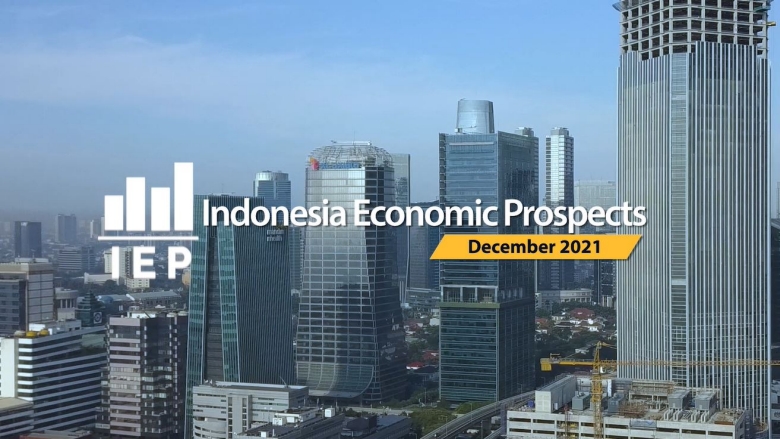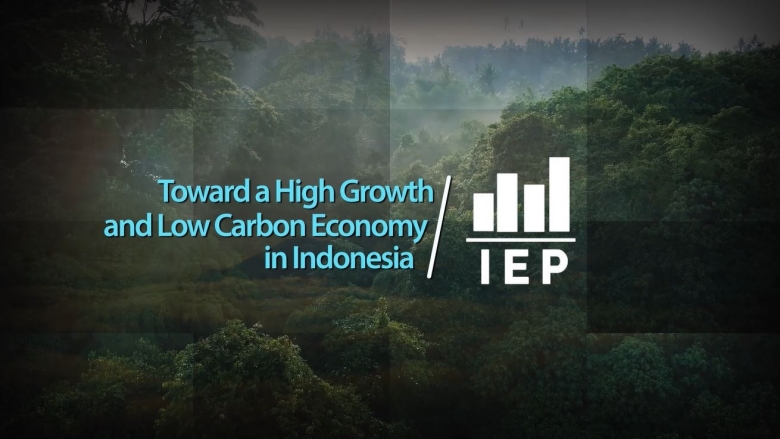Download the report (.pdf) | Press release | The launch event
MULTIMEDIA

VIDEO
Indonesia Economic Prospects (IEP), December 2021
Key findings
- The Indonesian economy continued to rebound in 2021 despite some moderations due to the COVID-19 Delta wave between June and August 2021. .
- The labor market was not as affected as in 2020 but remained less buoyant than before the pandemic. Unemployment did not increase markedly during the Delta wave, while labor force participation was stable, but remained above pre-pandemic levels. Although they have moderated since mid-2020, labor income losses were still prevalent, including among the bottom 40 percent of households.
- . The Government increased the 2021 COVID fiscal package by 0.3 percent to 4.8 percent of 2020 GDP and focused on the health and social assistance response. Tax collections have started to rebound but the tax-to-GDP ratio was still 2.7 percent below pre-pandemic as of September 2021 due to weak labor and corporate incomes. Bank Indonesia, commercial banks and other domestic investors’ increased holdings of government local-currency debt have helped meet the government’s higher financing needs.
- Overall, the public health response was strong and helped flatten Delta cases relatively early compared to regional peers. But COVID morbidity was relatively high during the Delta peak as many hospitals reached near full capacity and oxygen needs rose sharply. Indonesia has accelerated the vaccine rollout program, particularly among vulnerable groups and in areas with high viral transmissions such as cities and economic centers.
- Credit to the private sector has picked up in recent months but remained below pre-pandemic levels and peers. Nevertheless, household demand for credit remains stable.
- . However, risks and uncertainty remain very high, including the possibility that new transmissible and severe COVID-19 variants could spread.
- Given the narrowing macroeconomic policy space and risks of COVID-19 scarring, it is important to continue structural reforms to support strong, green, resilient, and inclusive growth. The report recommends to:
- Contain the pandemic by continuing to accelerate the vaccine rollout and improving testing, tracing, and treatment.
- Maintaining accommodative monetary and financial sector policies, while preparing to manage a tightening of global financial conditions.
- Enhance fiscal space by increasing tax revenues and improving the targeting and prioritization of fiscal support.
- Advancing structural reforms with measures to boost inclusive and green growth. Several policy priorities include deepening the financial sector, reversing learning losses due to school closures through remedial classes and other interventions, helping youths find jobs through training and active labor market programs, and boosting the development of the digital economy.
- This edition of the Indonesia Economic Prospects also discusses how Indonesia can turn its climate commitments in the power sector into actions while advancing the country’s broader development objectives. The government aims to cut greenhouse gas emissions by 26 to 41 percent by 2030 and reach carbon neutrality no later than 2060. :
- Strengthening the power sector institutions by improving coordination, planning, and regulation.
- Enabling private investments in renewable energy by reforming renewable energy price controls, reducing or eliminating local content requirements on renewable energy equipment, reducing coal and fuel subsidies and upgrading the electricity infrastructure.
- Ensuring the power sector’s financial sustainability by improving the revenue adequacy of the power utility and reducing energy subsidies.
- Paving a just transition for all by unleashing new sources of growth and providing social assistance and active labor market programs to help those affected by the coal phase-down and energy transition smooth their income and acquire new skills.
MULTIMEDIA

VIDEO